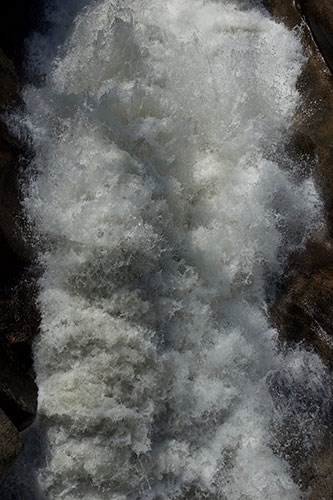

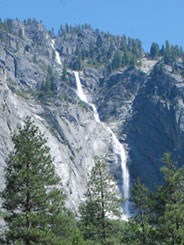
Sentinel Falls (about 2,000 feet) This waterfall is located on the south side of Yosemite Valley, just west of Sentinel Rock. It is comprised of multiple cascades, which range in height from 50 - 500 feet. You can see this waterfall from areas along Southside Drive near the Sentinel Beach Picnic Area, and near the Four Mile Trailhead. Alternatively, you can view it from across Yosemite Valley near Leidig Meadow, or while hiking the Upper Yosemite Fall Trail. 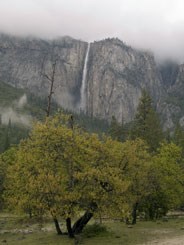
Ribbon Fall (1,612 feet) You can see Ribbon Fall from the road as you drive into Yosemite Valley, just beyond the turn for Bridalveil Fall (parking is available in turnouts). 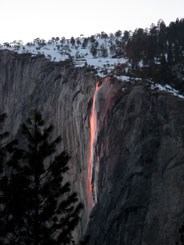
Horsetail Fall (1,000 feet) Horsetail Fall is famous for appearing to be on fire when it reflects the orange glow of sunset in mid- to late-February. It falls off of the east side of El Capitan and is best seen from just east of El Capitan. To see Horsetail Fall, park at the El Capitan picnic area (on Northside Drive west of Yosemite Valley Lodge) or in turnouts just east of the picnic area. You can see the waterfall from the road. 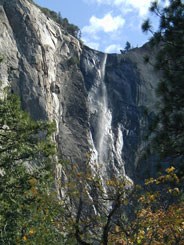
Bridalveil Fall (620 feet) This is often the first waterfall visitors see when entering Yosemite Valley. In spring, it thunders; during the rest of the year, look for its characteristic light, swaying flow. You can see Bridalveil Fall from near the tunnels on the Wawona Road (Highway 41) or Big Oak Flat Road (Highway 120) and from a signed parking lot on your way into Yosemite Valley. You can walk to the base via a short but steep (up to 24% slope) trail in just a few minutes. 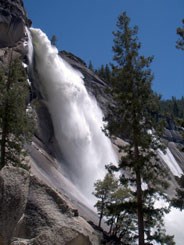
Nevada Fall (594 feet) You can see Nevada Fall (from a distance) at Glacier Point. The road to Glacier Point is open approximately late May through sometime in November. A wheelchair-accessible trail is available to the viewpoint when the road is open. You can also hike beyond Vernal Fall to Nevada Fall on a steep trail (see a list of Valley day hikes). 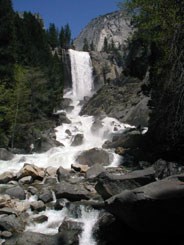
Vernal Fall (317 feet) You can see Vernal Fall (from a distance) at Glacier Point. The road to Glacier Point is open approximately late May through sometime in November. A wheelchair-accessible trail is available to the viewpoint when the road is open. You can also hike to Vernal Fall on a steep trail (see a list of Valley day hikes). 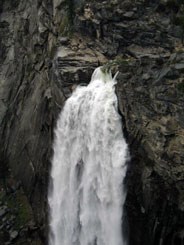
Illilouette Fall (370 feet) While many hikers notice this waterfall as they're hiking toward Vernal Fall, the best place to see it is on the Panorama Trail, a few miles from Glacier Point (see a list of Valley day hikes). This waterfall is not visible from any road; it's only visible by hiking on steep trails. 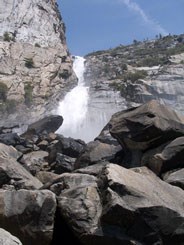
Wapama Falls (1,400 feet) Relatively few people visit Hetch Hetchy Valley to see this roaring waterfall. In some springs, the water from this fall flows over the footbridges near its base. You can see this waterfall from the parking lot at O’Shaughnessy Dam or you can hike on an uneven trail to near its base (see a list of Hetch Hetchy day hikes). 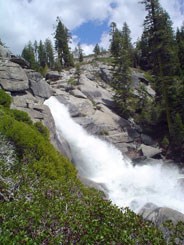
Chilnualna Falls (about 2,200 feet) This waterfall, located in Wawona, hides behind twists and turns in the rock; it's impossible to see the entire fall at the same time. You can't see this waterfall from a road; the only way to see the fall is to hike to its top via a steep trail (see a list of Wawona day hikes). |
Last updated: November 8, 2024
